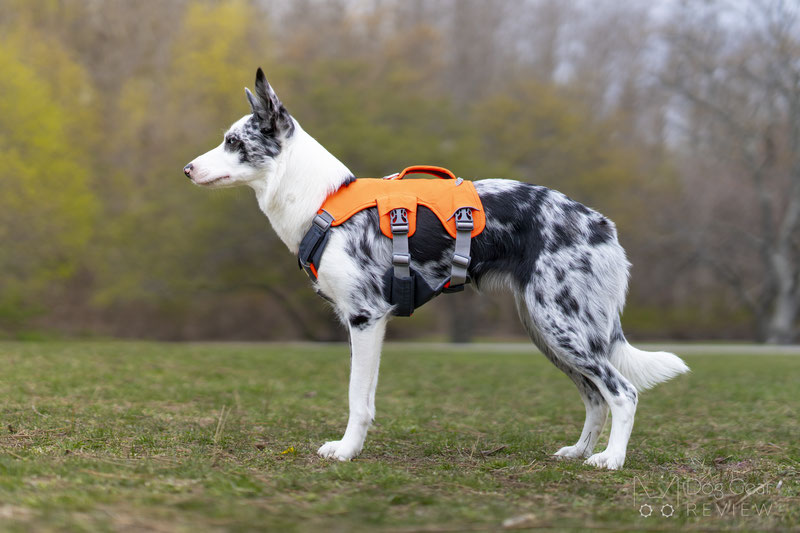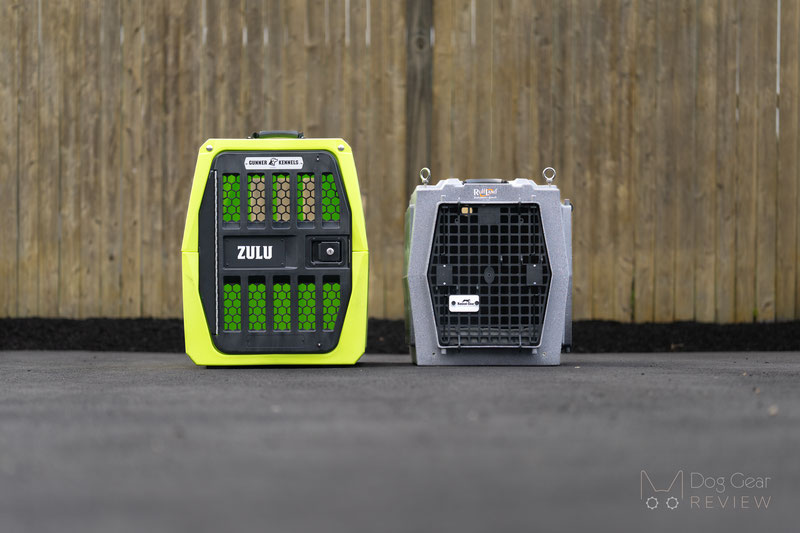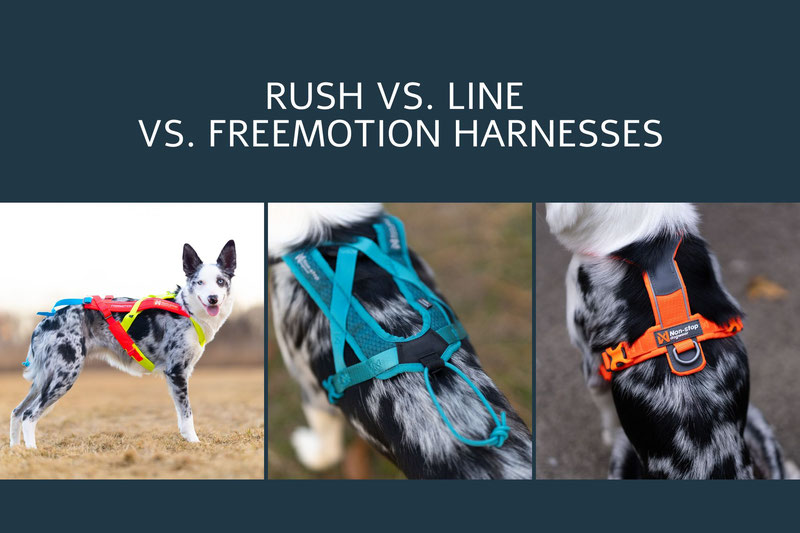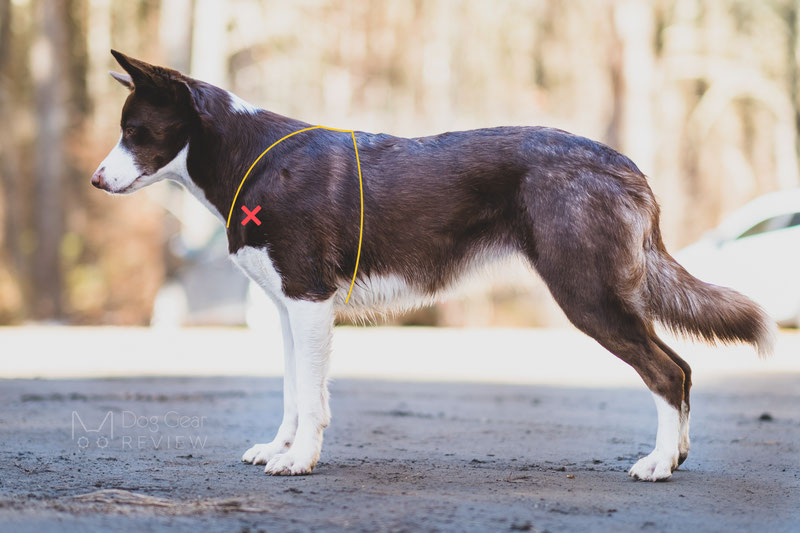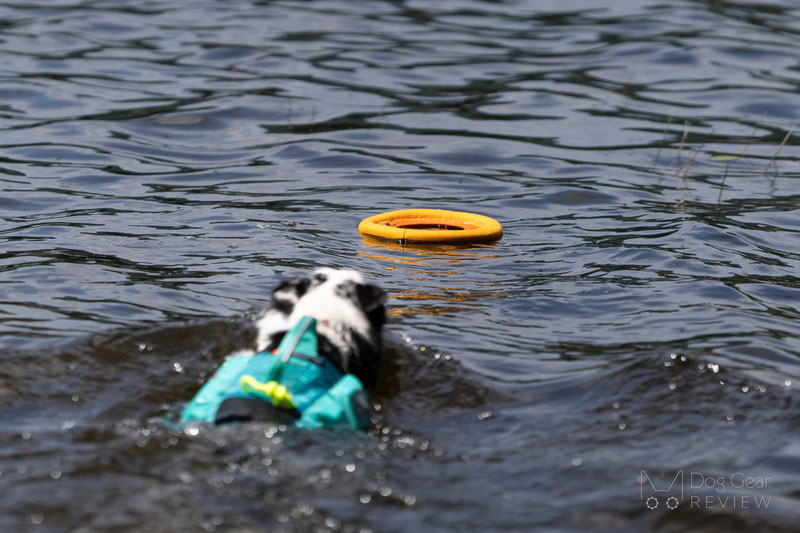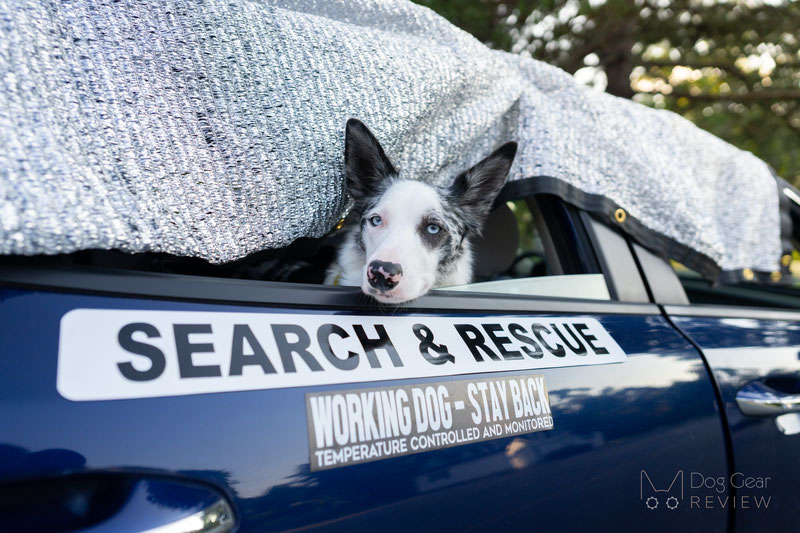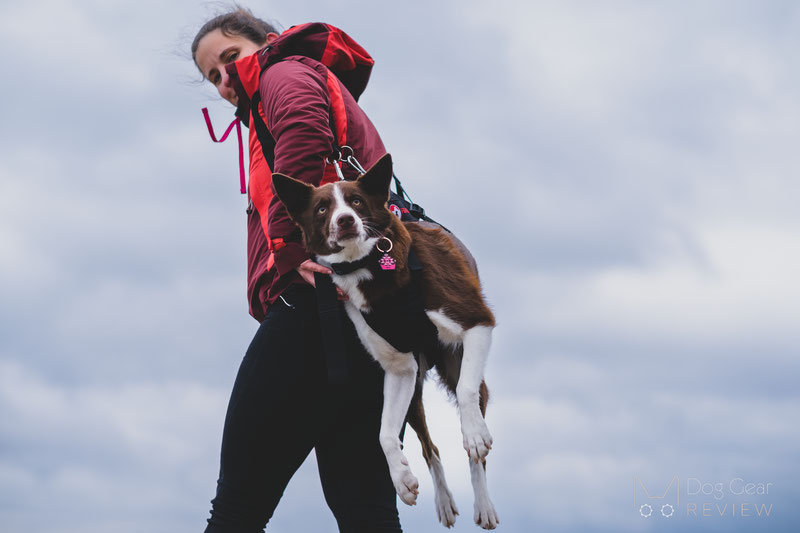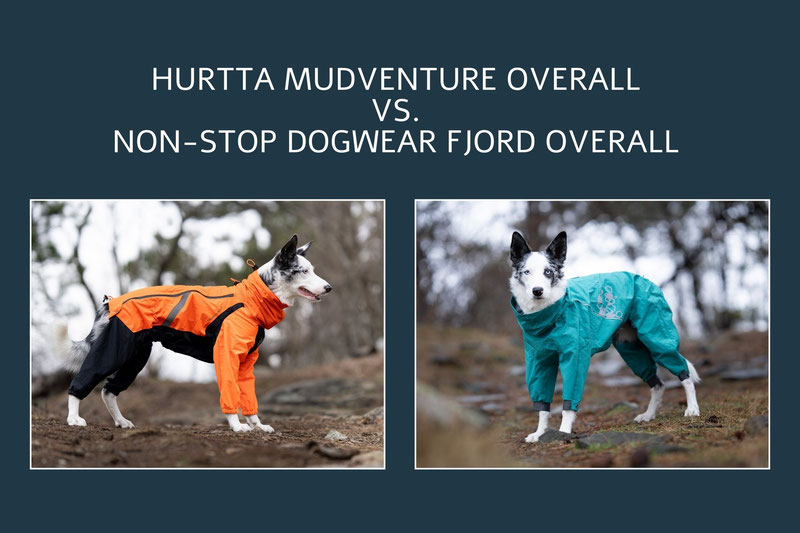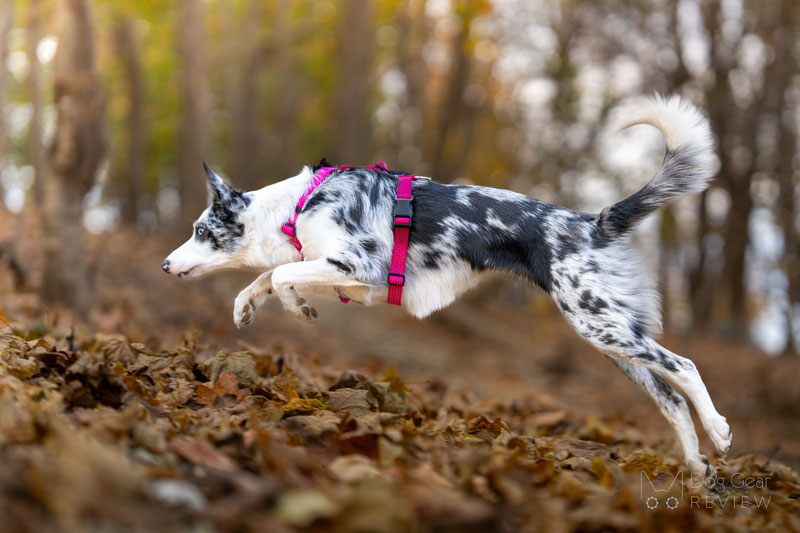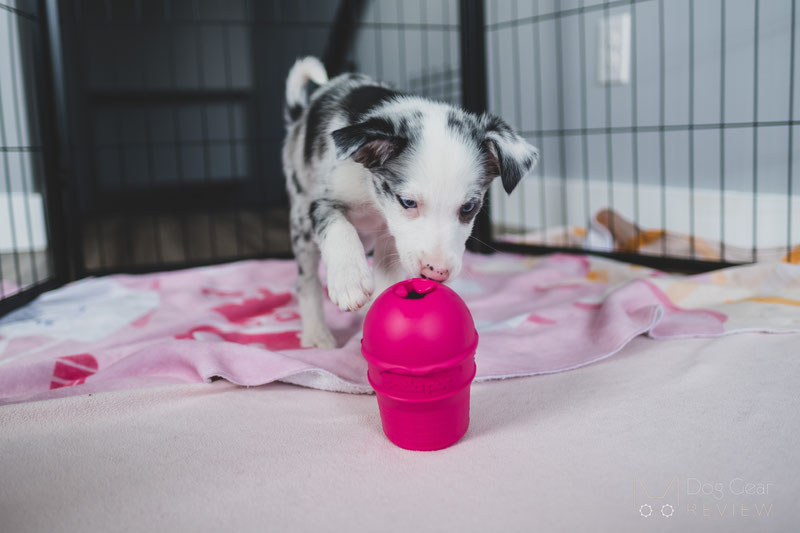When it comes to our dogs, ensuring their safety during walks or outdoor adventures should be our main priority. One crucial aspect of safety is selecting the right gear - especially for dogs who lunge or get scared easily and try to slip out of their harness/collar. However, sometimes it is hard to know which dog harness is the right choice as many of them claim to be escape-proof.
In this article, we discuss the nuances of escape-proof dog harnesses, examining what makes them effective and reliable and discussing how to choose one that works best for your dog.
Can a short, Y-harness be escape-proof?
Short, Y-shaped harnesses, while popular, often fall short in terms of preventing an escape. Their design leaves room for maneuverability and can easily slip off if not properly secured as we will discuss at the end of the article.
If you haven’t had a dog who pulled this stunt on you, it might be hard to imagine how they can get out of a well-fitting and well-adjusted harness but dogs are a lot more agile and flexible than we might think. To get out of a harness, they usually back away pulling on the leash, then just stand on their back legs, putting their head down low, while moving the legs up into a Superman pose and most of them can slip out of their harness in seconds when they really want to.
If a dog is scared or does not yet have a reliable recall, this can cause a dangerous situation, especially in high-traffic areas.
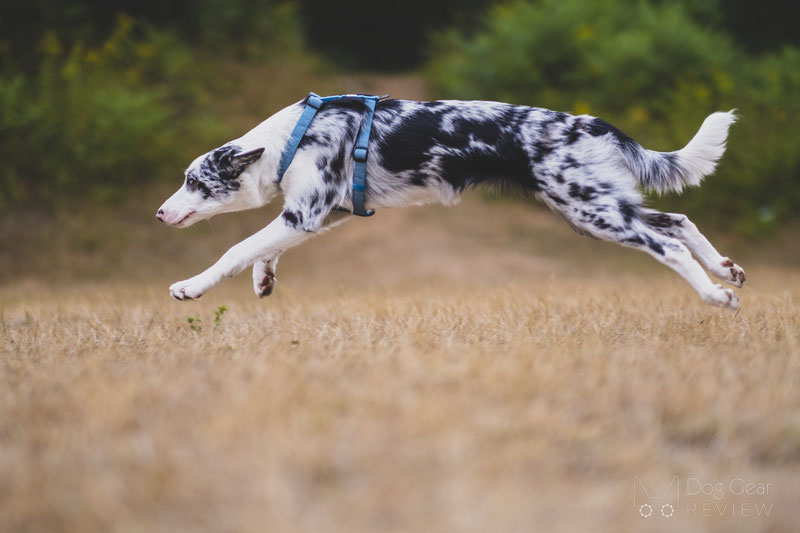
There are certain features of a Y-harness that make it less likely that a dog can slip it, including more rigid materials (thicker material on the back panel), bigger back coverage (over only straps), correct adjustment, and the correct size/fit. However, no short harnesses (Y, H, or cross-shoulder) are ever 100% escape-proof by themself.
There are a few unique Y-harnesses that are designed with escape-proof features in mind.
One example is the Baumutt In. Line harness that has a limited slip feature attached to the front ring. This behaves like a limited slip martingale collar: when there is leash pressure, it tightens a bit which keeps the harness from rotating to the side when used for no-pull training. The same also prevents the dog from backing out as the neck section will be tighter than their head. When adjusted and fitted correctly, this should not choke the dog even when fully tightened.
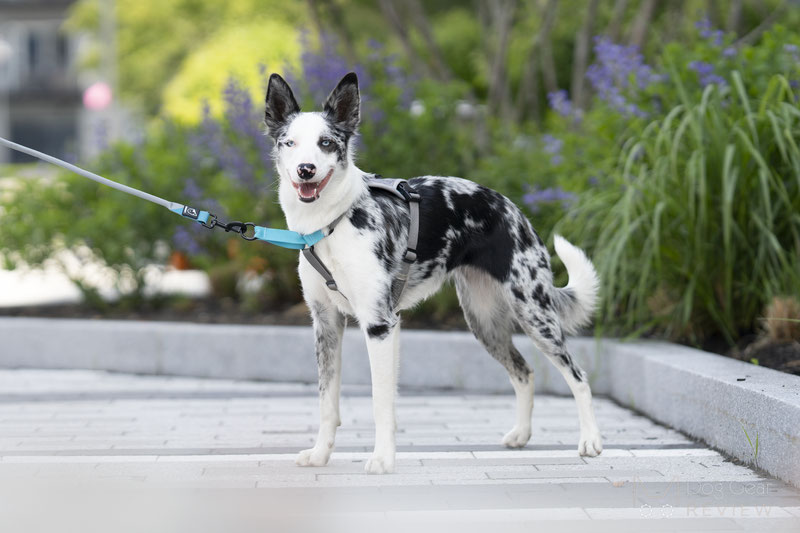
BAUMUTT IN . LINE No-pull Harness
Innovative no-pull dog harness
Highly adjustable, well-fitting support for dogs needing no-pull training or for escape artists.
Disclaimer: this review contains affiliate links, which support Dog Gear Review if you purchase the product after clicking on it without costing you anything extra. Using affiliate links will never compromise us in writing unbiased, honest reviews!
Another version of the same approach is the Duo Adapt Security harness. This American-made, heavy-duty harness has a back leash attachment point that tightens around the neck on leash pressure preventing a dog from backing out. The neck and the back panel serve as a buffer ensuring the straps cannot tighten too much around the neck.
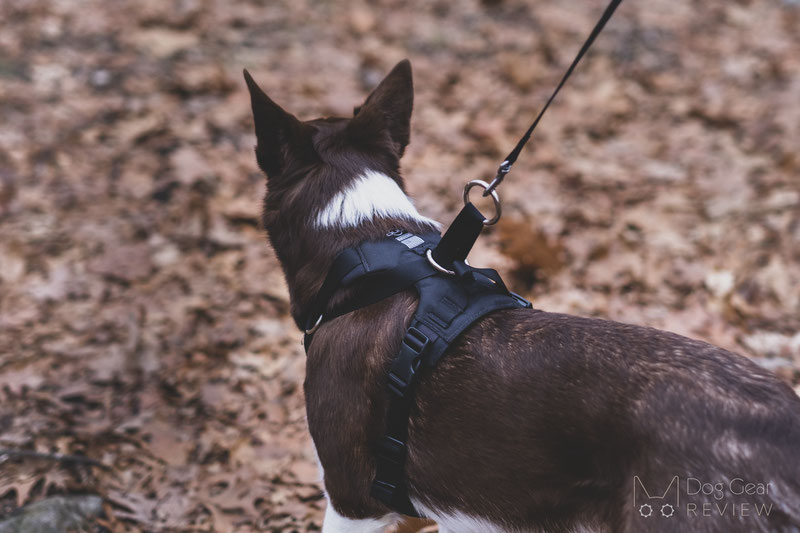
DUO Adapt Security Dog Harness
Durable, abrasion-resistant material
The sliding neck straps provide a cinching system to prevent dogs from slipping out, while the padded back and chest plate act as a buffer.
Disclaimer: this review contains affiliate links, which support Dog Gear Review if you purchase the product after clicking on it without costing you anything extra. Using affiliate links will never compromise us in writing unbiased, honest reviews!
There are a few brands offering escape-proof harnesses containing a strap going around the chest/belly area with an unlimited slip design. A panicking dog yanking on the leash can very seriously injure themself with a rope material tightening around them - especially if that tightening is over the stomach area. Dogs also tend to freak out even more from the increasing pressure, so these are solutions we do not consider to be safe - although they certainly prevent the dog from getting loose.
What makes a harness escape-proof?
Besides the few unique options mentioned above, most escape-proof harnesses are designed to have a second chest strap - the last strap going over the narrower part of the dog. This design plays a crucial role in preventing dogs from wriggling out of their harnesses.
The reasoning is most visible on a greyhound-style dog but if you look at Zulu’s image below, you will also see that the area where most harnesses sit (behind the front legs) is also the spot where she has the biggest chest circumference. Her waist is significantly slimmer than the ribcage area where the chest strap of most harnesses sits.
If the harness strap sits far back, she would have a very hard time backing out because her chest is a lot deeper, so the harness strap would not be able to slide off. On dogs with a deep chest, having the third strap around the end of the ribcage can be enough to do the same, while some barrel-chested dogs with a minimal tuck need the last strap right around their waist to keep them from escaping.
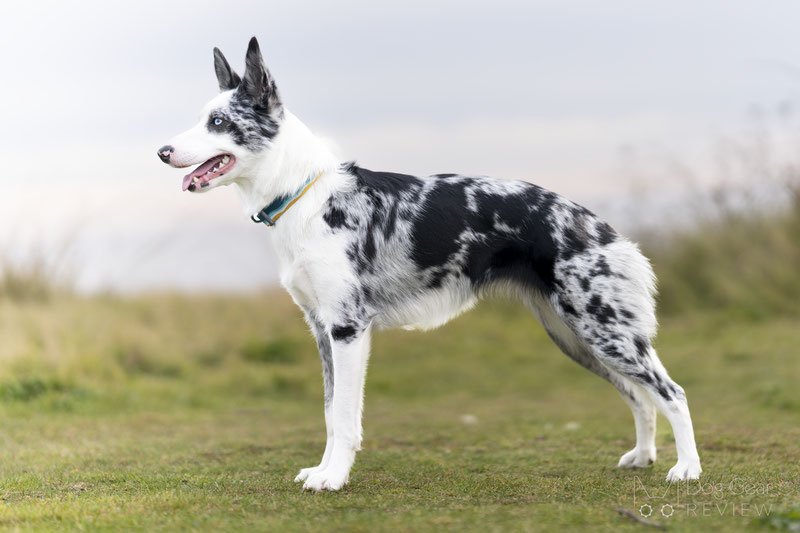
Why are most harnesses not designed to have the chest strap further back to make them escape-proof?
We have a long and detailed article about the correct Y-harness fitting where we discuss that the safest designs stay over the ribcage and avoid having straps over the soft tissue of the stomach (around the waist). We also have another detailed article discussing the fitting of the three-strap harnesses specifically as they pose some unique risks when not adjusted correctly.
This is a good general guideline to ensure that lunging or pulling on the leash will not cause internal injuries - however, if you have a dog who has no recall or is known to freak out and run away, keeping them leashed can have priority over these general guidelines.
Is an X-back (long) pulling harness good for dogs who slip their harnesses?
This is a question we hear frequently, as just by looking at some of the long harnesses, they seem a lot more extensive and secure for escape artists. However, the same applies here: as they are designed for pulling, they will be designed to sit over the rib cage to avoid putting pressure on soft tissue so dogs can slip them.
Also, these harnesses don’t even have buckles, you put them on by pulling it over the dog so when a dog wants to get away, they can back out the same way. Again, having a long harness with more rigid straps (like the Non-Stop Dogwear Freemotion in the photo below) makes it less likely that the dog can slip it but it is not impossible.
Just because it can be difficult to put these harnesses on dogs, don’t assume that an anxious dog freaking out would not be unable to slip out of them with surprising speed. There are a few brands offering long pulling harnesses with an extra, looser strap around the waist but these harnesses are designed specifically for pulling sports and are usually not ideal for everyday use for anxious dogs.
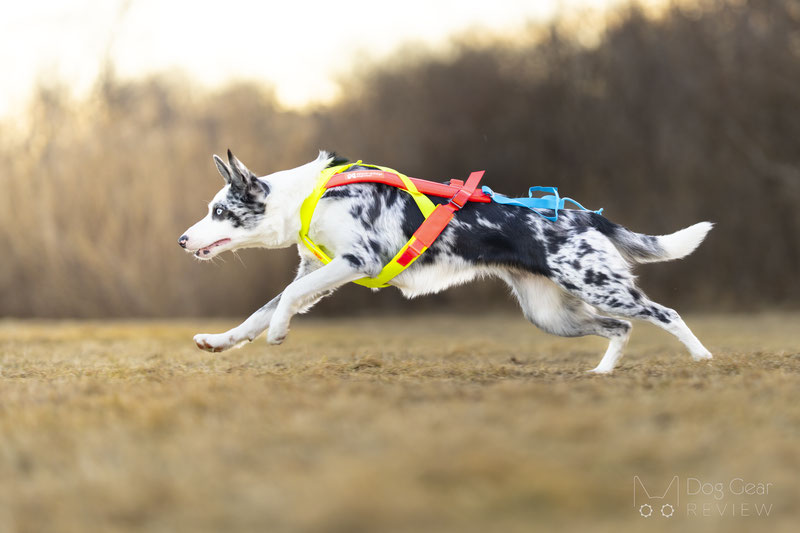
Non-stop Dogwear Freemotion Harness
Padded, adjustable but not escape-proof
Use the code DogGearReview for a 10% discount on all their products worldwide.
Disclaimer: this review contains affiliate links, which support Dog Gear Review if you purchase the product after clicking on it without costing you anything extra. Using affiliate links will never compromise us in writing unbiased, honest reviews!
Which one is the best escape-proof, three-strap harness?
Three-strap harnesses give you a good combination of control and safety as the middle strap distributes most of the weight around the ribcage and the last strap ensures, the dog cannot slip out of it. Below you will see details of the three most popular three-strap harnesses - all having slightly different features that might be a pro or a con depending on the dog’s body shape and their needs.
As we will discuss, the biggest factor will always be the fit which will be unique to each dog, so your best option is to to try these on before buying if possible.
- Ruffwear Flagline
The Ruffwear Flagline harness is a good middle ground between safety and comfort for many dogs. The last strap is connected to the second so it doesn’t go all the way to the waist but sits right behind the ribcage on most dogs. The lightweight, thin material provides less support than some other options below, but it is a low-profile, comfortable solution that works very well for gear-shy dogs. It provides good armpit clearance on most dogs (even ones with a deep chest) and can be used in the summer heat due to the lack of padding and the minimalistic design.
All of these are enough to prevent most dogs from slipping a harness but if you have a very determined pup, you might need something more padded - with a more rigid structure - and/or a last strap that goes farther back where their body is narrower.
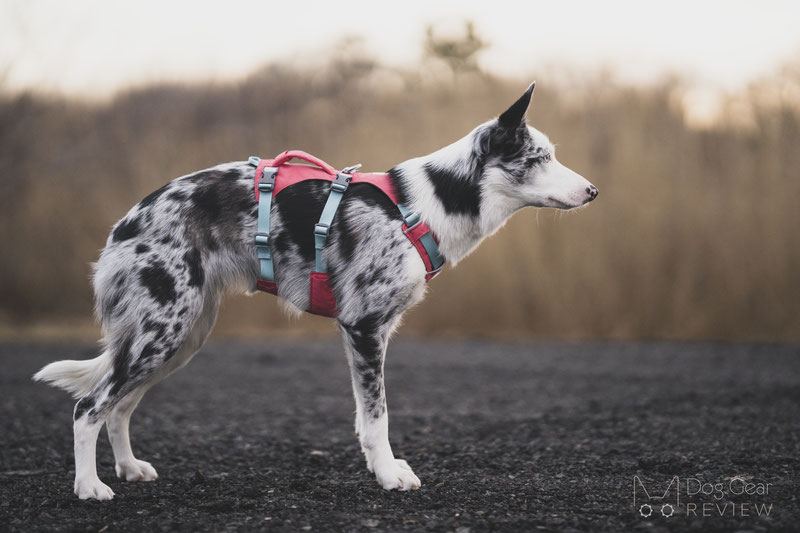
Ruffwear Flagline Dog Harness
Light & colorful
Highly adjustable, durable three-strap harness that works for most escape artists. The last strap sits far enough to prevent most dogs from slipping out (depending on fit).
Disclaimer: this review contains affiliate links, which support Dog Gear Review if you purchase the product after clicking on it without costing you anything extra. Using affiliate links will never compromise us in writing unbiased, honest reviews!
- Non-stop Dogwear Rock Harness Long
Another three-strap harness is Non-stop Dogwear’s new Rock Harness Long. This is a highly adjustable harness, and while it has a padded and more rigid back and belly panel providing support, they are made of a unique material called HexiVent which is breathable and waterproof, making it a great summer option.
This is supposed to be a shorter harness, still sitting over the ribcage on most dogs and providing good armpit clearance. The many adjustable straps - including the adjustable cross strap between the two chest straps - and the more rigid back panel with extensive coverage make this another great option for most escape artists - especially the ones with a deep chest.
However, for dogs with a barrel chest / without a defined tuck (belly area), the last strap might need to be the same length as the second one in which case a terrified dog could get away.

Non-stop Dogwear Rock Harness Long
Highly adjustable, well-fitting, padded harness
Use the code DogGearReview for a 10% discount on all their products worldwide.
Disclaimer: this review contains affiliate links, which support Dog Gear Review if you purchase the product after clicking on it without costing you anything extra. Using affiliate links will never compromise us in writing unbiased, honest reviews!
- Ruffwear Webmaster Harness
Last, but not least, we arrived at the Ruffwear Webmaster Harness which is probably the best-known harness for serious escape artists. As you see in the photo below, its last strap is not connected to the second (like the two previous examples) which allows it to sit all the way back on the narrowest point of the dog, making it impossible to slip it. The rigid, padded back panel also provides a high level of stability to the harness but it can also trap the summer heat.
For most dogs, the biggest concern with the Webmaster harness is that the second strap tends to sit right in the armpits causing chafing and a change in stride. Also, the last strap sitting over the stomach (making it impossible to slip it) can also cause injuries if the dog is trashing around trying to get away.
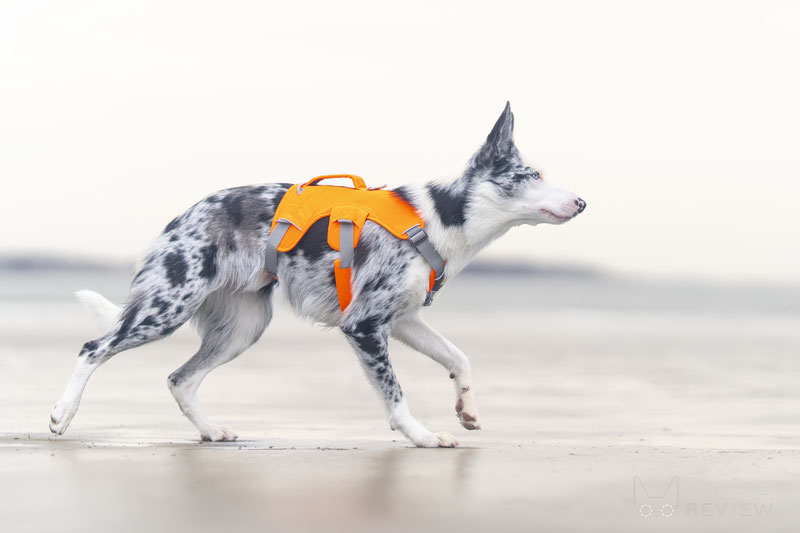
Ruffwear Webmaster Harness
Highly visible & durable
A more rigid, very visible, padded dog harness with the third strap going around the narrowest part of the dog.
Disclaimer: this review contains affiliate links, which support Dog Gear Review if you purchase the product after clicking on it without costing you anything extra. Using affiliate links will never compromise us in writing unbiased, honest reviews!
To make a third strap around the waist as safe as possible, you want this last strap to be looser because the harness will be pulled forward during vigorous activities like running, playing, or even rolling around. A too-tight strap around the abdomen can cause discomfort and even injuries, especially if a dog is lunging on a leash with the attachment point being far back on the harness, putting that sudden pressure on the stomach. On most dogs, this should still be enough to prevent them from slipping the harness, while making the harness more comfortable.
While for regular harnesses, we leave 2-3 finger room under the harness for medium-sized dogs, for this last strap you want to fit 3-4 fingers or maybe even your palm under it - depending on the dog’s build, body shape, and the position of the strap. This rule is hard to scale for large or tiny dogs, so it is important to evaluate the fit on your dog and readjust the straps as needed.
We talked a bit more about this when comparing the fit of the Ruffwear Web Master Harness with the Flagline and discussed how the addition of the Brush guard to the bottom of the harness can significantly change the fit of the Webmaster harness:
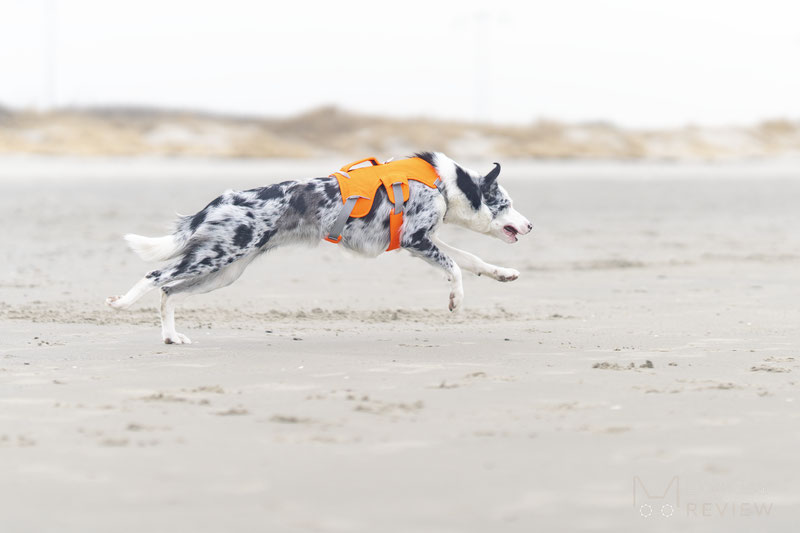
Ruffwear Webmaster Harness
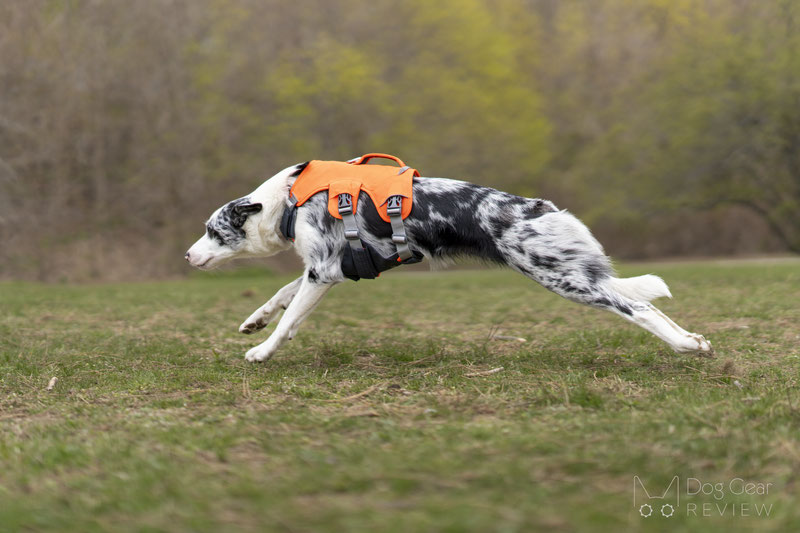
Ruffwear Webmaster with BrushGuard
- OneTigris Harnesses
OneTigris is a tactical-style brand that offers a few different three-strap harness options for an affordable price. They are usually padded, offer extended coverage, and are made of a thicker, heavy-duty material. However, for example, the AIRE Mesh Harness is on the thinner side and it has a mesh section to provide airflow under the harness.
Their harnesses are usually designed to sit over the ribcage so the last strap is always connected to the padded underchest area. They best fit medium/large dogs but they have a few harnesses available for smaller dogs as well.
A few of their three-strap harnesses we have used before:
- AIRE Mesh Harness Review
- Metall K9 Harness Review
- Gladiator Support Harness Review
- We just started testing their X Armor Harness so don’t have a review yet
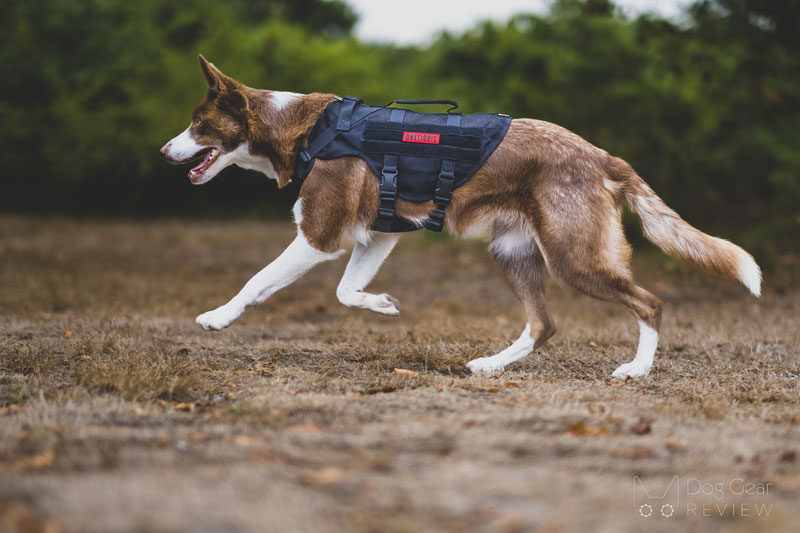
OneTigris Aire Mesh Harness
Comes in 5 sizes, 6 colors and has 3 leash attachment points
Use the “DOGGEARREVIEW” coupon for 10% off on their website.
Disclaimer: this review contains affiliate links, which support Dog Gear Review if you purchase the product after clicking on it without costing you anything extra. Using affiliate links will never compromise us in writing unbiased, honest reviews!
While I know most readers would like to have a clear answer on which three-strap harness is the best, most of these factors will come down to the body shape of your dog, your preferences, and how you want to balance the pros and cons of some of these designs.
There are many other options out there with similar-looking designs, however, it can be hard to trust a no-name brand on quality especially if they don’t have many reviews yet. If your dog is a flight risk and that harness is meant to keep them from getting injured/lost, it is crucial to invest in quality gear (good quality buckles, stitching, and materials). If that is not within your budget, always use a backup strap (see in the next section) with your harness so that if something fails, you can still have control.
If your dog is hard to fit into most harnesses, there are also companies offering custom options that you can find on Etsy and other places - usually when searching for Greyhound harnesses.
What else can I do to stop my dog from escaping the harness?
While most people focus on finding an escape-proof dog harness, a simple addition of a connector strap can make a huge difference with most setups. This is a short Biotahne or rope with two carabiners so you can attach the harness to a well-fitting collar, so if the dog slips the harness, the harness is still securely connected to the collar giving you a safety backup. If the setup allows, you can also attach the collar connector to the leash itself, just make sure it doesn’t put pressure on the collar on regular walks.
For dogs who have a small head and are able to also slip out of collars, it is recommended to have a limited slip martingale collar that tightens under leash pressure just enough to make it impossible to go over the head but still not choke the dog. When walking, both the connector strap and the collar are loose and have no pressure but they serve as a backup attachment in emergencies.
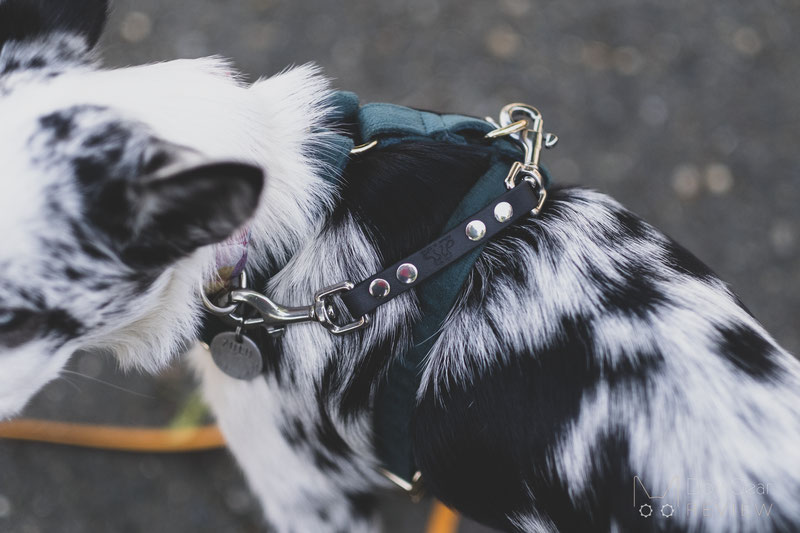
From my time volunteering at animal shelters, I know it is a common practice in the US to attach the leash both to the collar and a no-pull front ring as a safety precaution in case dogs try to get away or the harness breaks. The problems with this setup are a part of a bigger discussion but I shortly want to caution that this both makes the no-pull harness ineffective and puts constant pressure on the neck if the dog pulls.
Using the above-mentioned connector piece in these cases lets you use the harness the way it is meant to be used (regardless of a back or front attachment) while still giving you the same safety.
Our Biothane connector is from Henry and Sadie but you can create a solution at home as well, or reach out to small leash/collar companies with a request.
Summary
Selecting the right harness is essential for ensuring your dog’s safety and security during walks or outdoor activities but there are many factors that play a role in which option is the best for your needs.
While there are many options making it less likely that the dog can back out, harnesses with three-straps offer a higher level of security compared to the most common Y-shaped or cross-shoulder designs.
However, it is also important to know the risks of having a strap over soft tissue or having a harness that sits too close to the armpits and limits the shoulders’ full range of motion as we need to consider all these factors to decide which option will work best to keep the dog in front of us safe. The best option will be different for dogs with different body shapes and different problems and there is no one solution that works best for everyone.
Adding a connector piece between the harness and the collar or the collar and the leash is always a good precaution for anxious dogs to have a backup in case a buckle breaks or they manage to slip out of the harness. For some cases, this is a suitable, low-cost option that allows you to continue using a regular Y-harness without needing to change up the gear.
